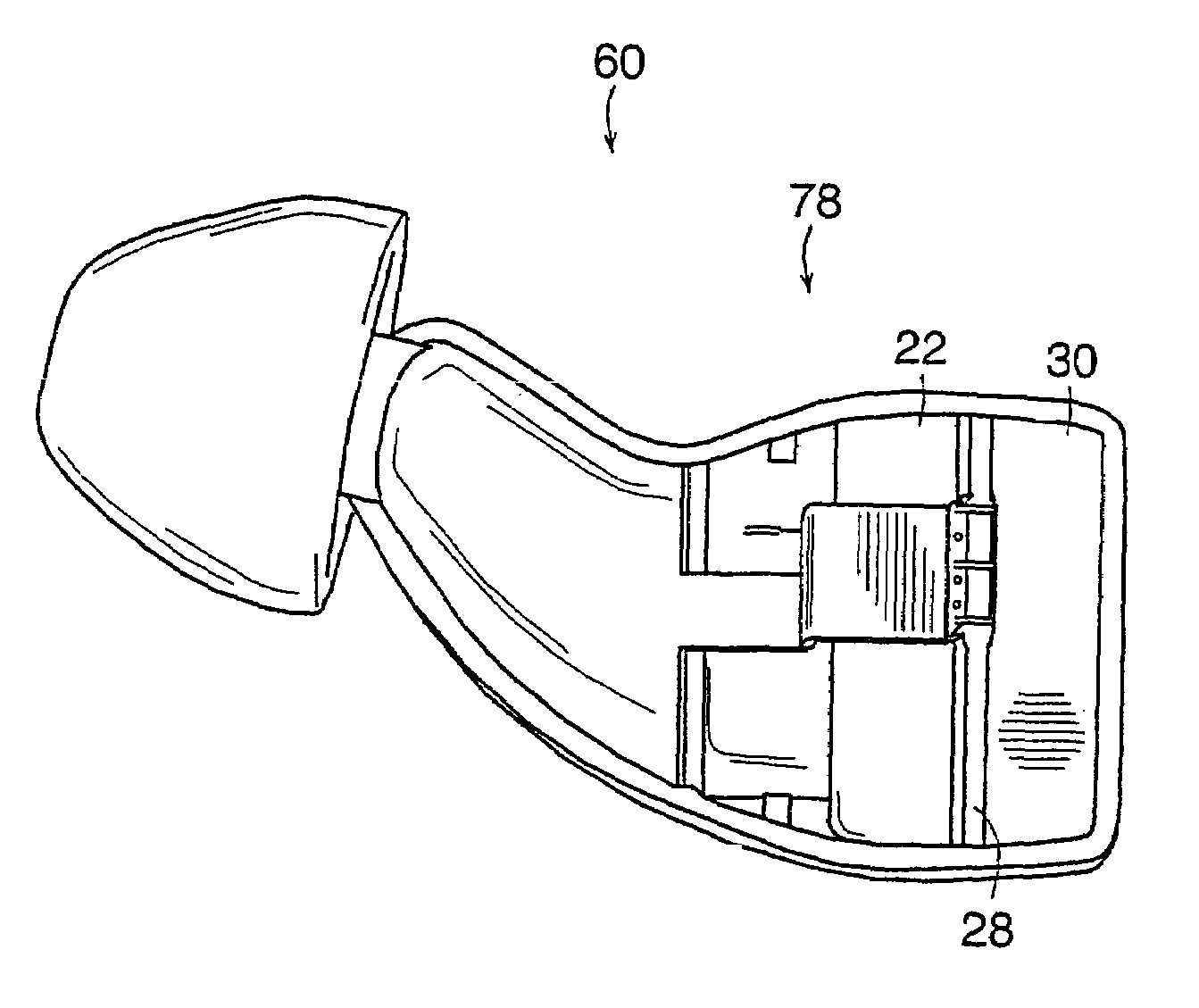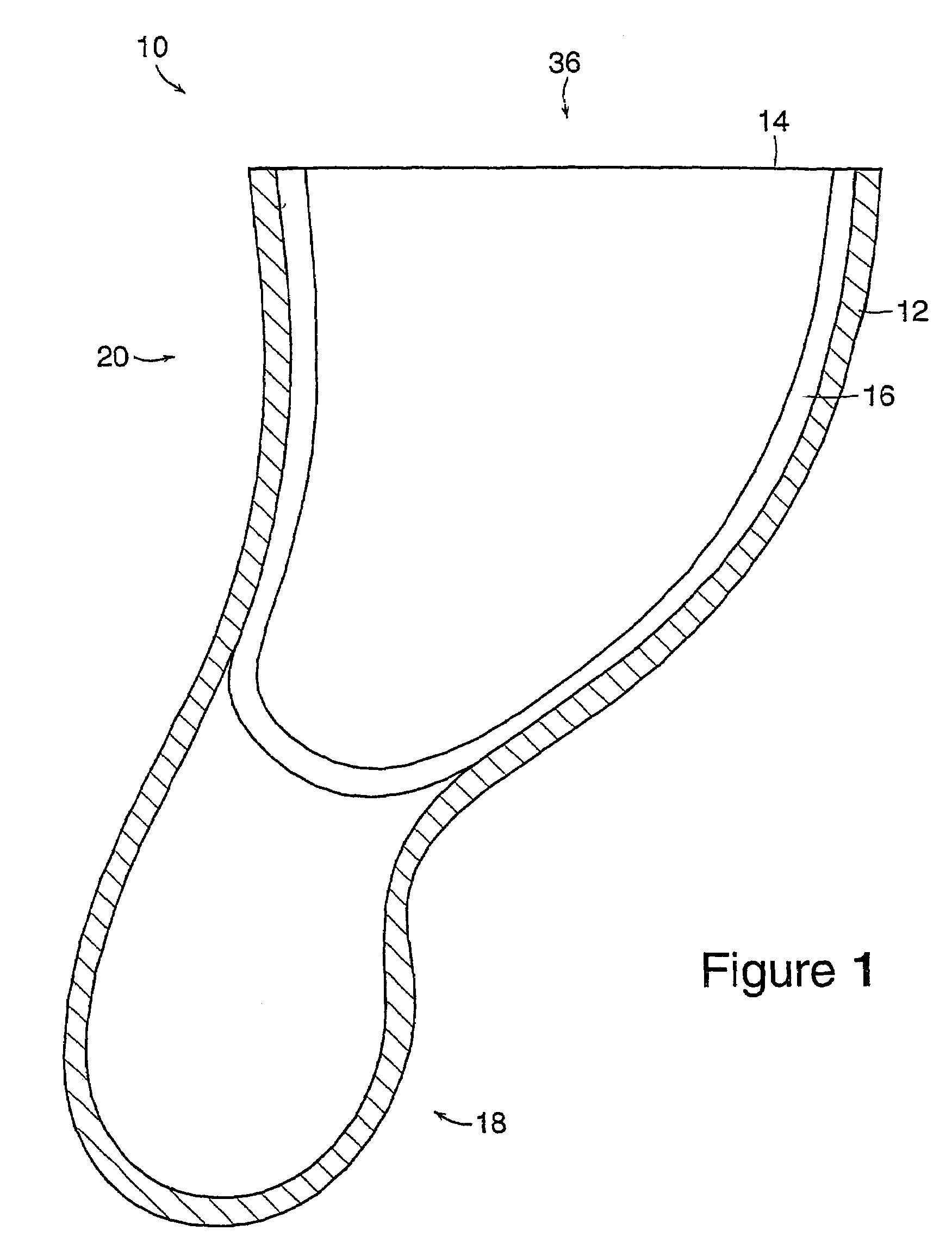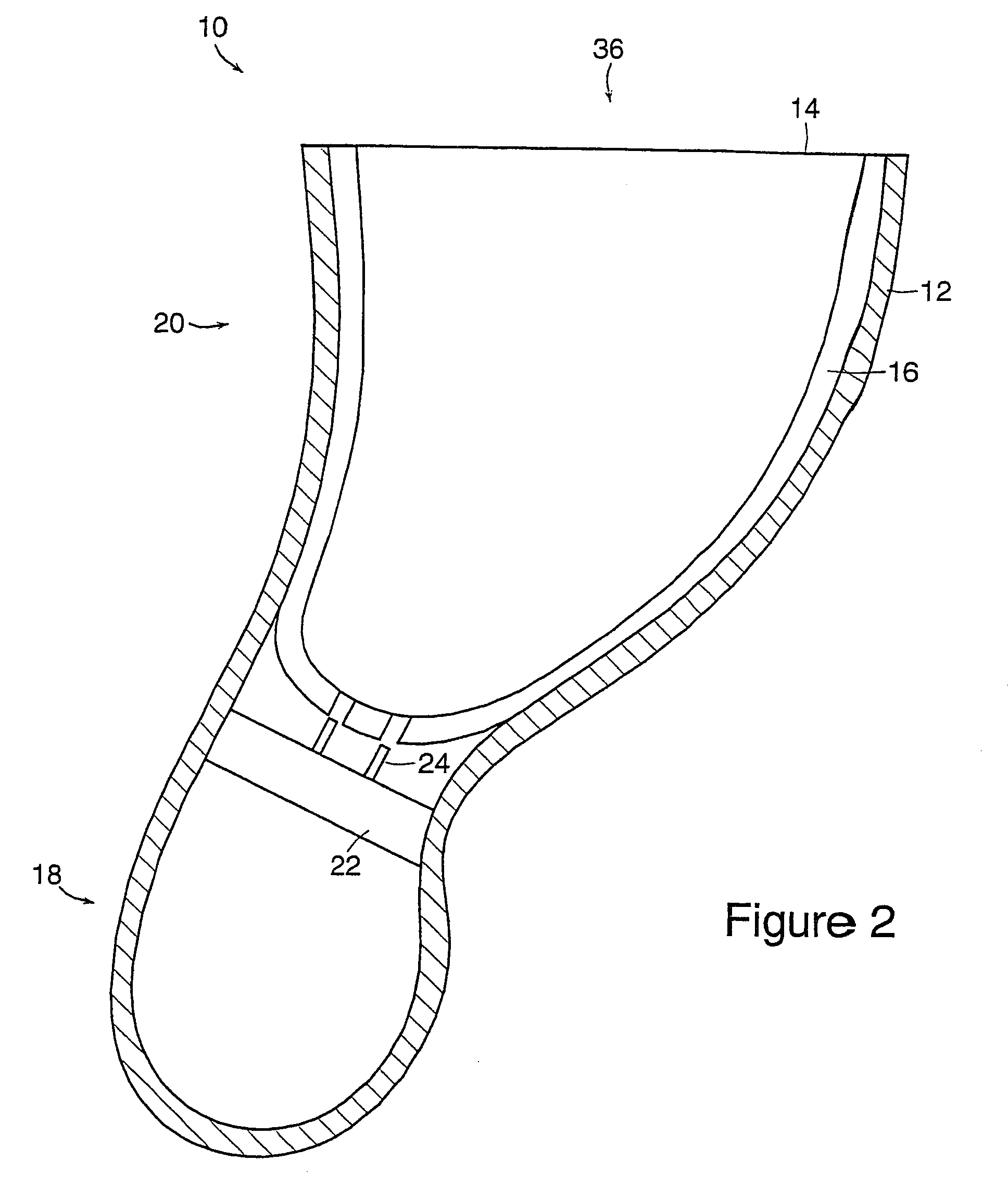Disposable modular hearing aid
- Summary
- Abstract
- Description
- Claims
- Application Information
AI Technical Summary
Benefits of technology
Problems solved by technology
Method used
Image
Examples
Embodiment Construction
[0078]An embodiment of a modular hearing aid 10 is shown in FIG. 1. The modular hearing aid 10 can have an earmold 12 and a base unit 36. The base unit 36 can be a rigid or semi-rigid structure to which the earmold is attached or which holds and aligns other internal components. In one embodiment, the base unit 36 can be a core 14 having a shell 16. In a preferred embodiment both the earmold 12 and the base unit 36 can be replaced by the user after use. The earmold 12 can be replaced on a more frequent basis than the base unit 36.
[0079]The earmold 12 can have three preferred embodiments in any given embodiment of the modular hearing aid 10. In one embodiment, the earmold 12 forms an earmold tip 18. The earmold tip 18 can be made from an ultra soft and compliant material. The material can be an injection moldable, biocompatible thermoelastomer, such as C-flex (Consolidated Polymer Technologies, Inc., Largo, Fla.). The material, in a preferred embodiment, can be a castable, biocompati...
PUM
 Login to View More
Login to View More Abstract
Description
Claims
Application Information
 Login to View More
Login to View More - R&D
- Intellectual Property
- Life Sciences
- Materials
- Tech Scout
- Unparalleled Data Quality
- Higher Quality Content
- 60% Fewer Hallucinations
Browse by: Latest US Patents, China's latest patents, Technical Efficacy Thesaurus, Application Domain, Technology Topic, Popular Technical Reports.
© 2025 PatSnap. All rights reserved.Legal|Privacy policy|Modern Slavery Act Transparency Statement|Sitemap|About US| Contact US: help@patsnap.com



